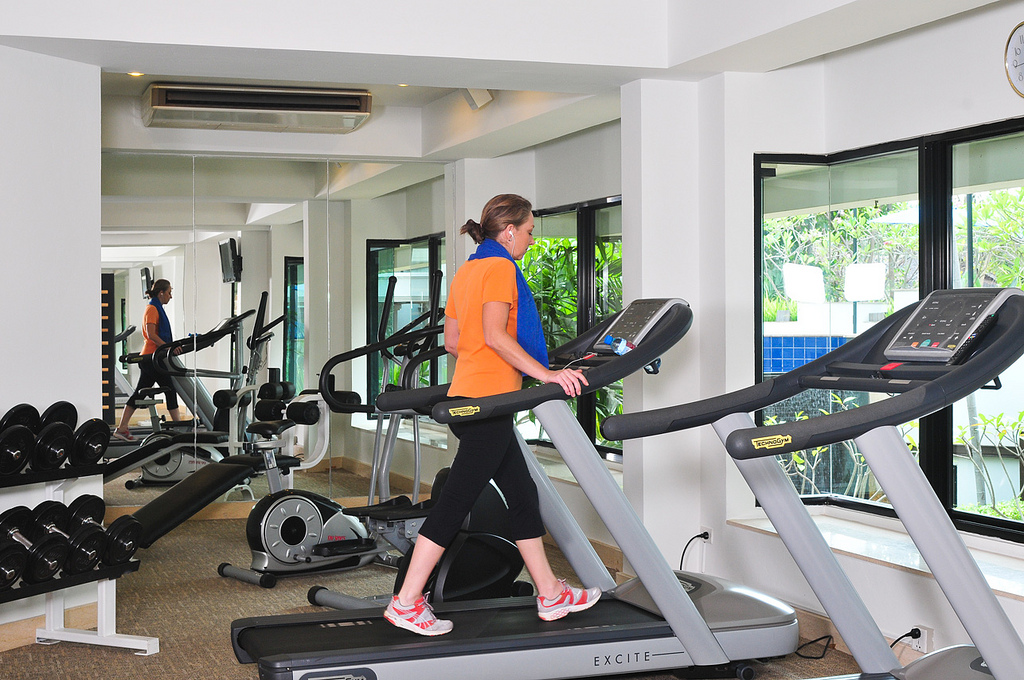Obesity remains a health crisis in the United States and will only become larger problem in the future, but exercise could help fight this epidemic.
According to the 2018 State of Obesity report, Alabama ranked the fifth-most obese state in the U.S. with 36 percent of Alabamians considered obese. The report predicts obesity and obesity-related diseases will only rise in the coming decade.
Heart disease is currently the leading cause of premature death, and Alabama had 311,842 of these cases in 2010. The report projects this will increase to 1,458,880 cases by 2030.
The report shows obesity has been rising in the U.S. since the late 1980s, but Chris Ballman, a professor in Samford University’s Department of Kinesiology, said it is accelerating and appearing at an earlier age.
“At this point it is rapidly growing so it doesn’t seem to be decreasing at all. A lot of the concern now is focusing on children as well and not just obese adults because we are starting to see it at a very early age,” Ballman said.
Many factors impact obesity, such as diet and exercise. Calorie-type and the number of calories a person consumes affect weight, but Ballman argues that exercise can help reduce obesity.
“Diet plays a very large role in the obesity epidemic but physical activity, from a health standpoint, is a large contributor to preventing disease,” he said.
However, more technology and sedentary work environments have made many Americans physically inactive. Elevators, escalators, computers, and desk jobs have all reduced walking. At home, robotic vacuum cleaners and lawn mowers have stripped physical activity from chores.
“We have essentially engineered physical activity out of our daily lives. Machines we can use have decreased our level of need for physical activity,” Ballman said.
The American College of Sports and Medicine, which helps determine physical activity guidelines, recommends moderate intensive activity five days per week for 30 minutes. This activity should be aerobic and include such exercises as running, walking, swimming, and cycling.
However, many Americans fail to exercise this much. According to a Centers for Disease Control and Prevention 2014 report, only 15 to 20 percent of Alabamians met these guidelines. Many Americans feel they lack the time to exercise, but Ballman argues that exercise just needs to be prioritized.
“We’re only asking for 30 minutes a day. You’ll have time for whatever you prioritize,” he said.
The simplest way to achieve this benchmark is by walking.
“When we say exercise, we don’t mean you have to go to the gym,” he said. “it could just be walking. The number one form of exercise in the world is walking.”
Ballman also encourages people to follow the 23-and-a-half-hour rule.
“A motto we go by is 23-and-a-half hours. So out of the 23-and-a-half-hours out of your day, make sure you get sleep and all your work done in that amount of time,” Ballman said. “Then with the last 30 minutes, use that time for physical activity.”
According to Ballman, states with more physical activity have less obesity, heart disease, diabetes, and cancer. Colorado has a low heart disease rate and 25 percent of this state’s population or greater is also physically active.
“Alaska, Colorado and more western states are meeting this more than the South, such as Tennessee, Mississippi, and Alabama. If you look at the places with the most physical activity, they are actually the places that are the least obese,” he said. “The ones that have the least physical activity … are worst as far as obesity goes.”
To effectively combat obesity, Ballman suggests utilizing modern medical practices while simultaneously encouraging exercise and healthier lifestyles.
“There is always a place for modern medicine but there is also a place for healthy living and prevention. I think if you try to have one without the other, it’s just not going to work,” he said. “If we can merge the two together a little bit better, I think that will benefit the United States’ healthcare system.”
Overall, solutions should be rooted in promoting exercise and creating more ways to exercise.
“It’s going to have to be on every level. It’s the individual’s responsibility to take the initiative and do it. I also think it’s the responsibility for other organization to make it more available for everyone else,” he said.
For example, Samford participates in the program Scale Back Alabama which promotes weight loss with challenges.
“It keeps you accountable because you’re measuring over time. People are starting to have accountability because I think that’s the hardest part,” he said.
To prevent further obesity, exercise should be stressed at an early age.
“We need to instill it sooner in children so they can develop a habit earlier and they’re more likely to exercise later on,” he said.
Lastly, Ballman recommends infusing physical activity back into their daily lives by taking the stairs more or parking away from stores and walking.
“Little things like that add up. What we know is a little physical activity is better than none,” he said.
For better health, the ACSM also suggests resistance training two to three days per week and that training sessions focus on a major muscle groups. They also advise flexibility exercises such as stretching or dynamic warm ups.

William is our News Editor. He is a Journalism & Mass Communications major from Birmingham, Alabama.






